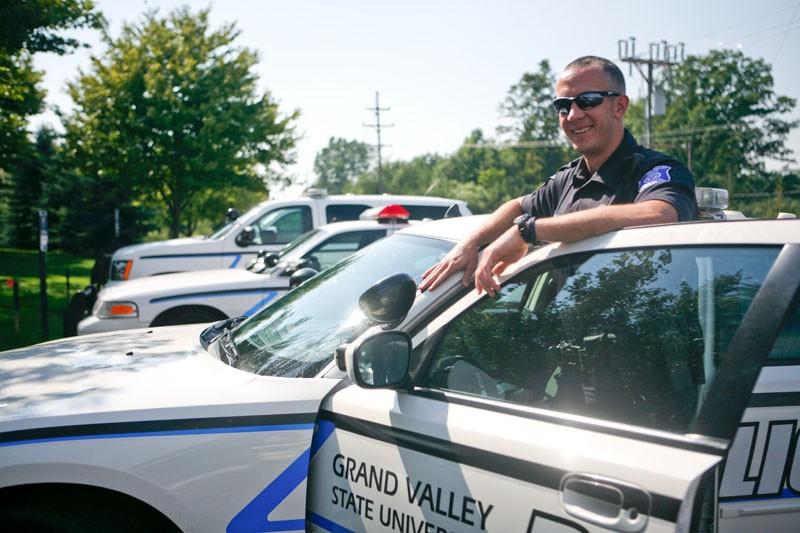GVPD officer undergoes drug training

GVL Archive Officer Jeff Stoll
Mar 15, 2012
Eighteen percent of all drivers killed in car crashes in 2009 tested positive for drugs, according to the National Highway Traffic Safety Administration. In Michigan alone, drug-related vehicle fatalities increased by 30 percent in 2010, while alcohol-related fatalities declined. With both national and state statistics on the rise, Grand Valley State University’s police department is adding a new resource to its team: a drug recognition expert.
Officer Jeff Stoll, who has served with GVPD for several years, was one of 14 officers to take part in Michigan’s second DRE course. DREs are trained to recognize signs of impairment in drivers under the influence of drugs other than or in addition to alcohol and to identify the type of drug or drugs impairing them. DREs use a 12-step evaluation process to help determine what drugs an individual may be under the influence of.
“It’s difficult at times to find impairment that is not readily identifiable,” Stoll said. “Alcohol and marijuana give off recognizable odors… The goal of this program was to educate in the symptoms, signs and behaviors of people under the influence of these types of drugs (that are not readily identifiable).”
Stoll spent two weeks at the Michigan State Police Training Academy in Lansing for instruction, followed by a third week conducting hands-on drug assessments and evaluations at the Maricopa County Jail in Arizona, as required by the DRE course. Volunteer inmates undergoing processing at the jail served as evaluation subjects.
Although it is rare for campus police officers to encounter users of some of the hard drugs Stoll is now trained to identify, he believes his DRE training will be especially beneficial for identifying individuals under the influence of prescription medications, the abuse of which is increasingly common among college students.
“I think with some of our concerns about prescription use and abuse, this is going to be especially helpful because it’s difficult to track those down without knowing what you’re looking for,” Stoll said.
Stoll described the program as challenging and extremely detailed. The final in-class exam alone took more than five hours to complete.
Capt. Brandon DeHaan, assistant director of the Grand Valley Police Department, said GVPD intends to use Stoll’s training both at the university itself and in the surrounding area.
“That [training] will be very beneficial not only to our department but we anticipate assisting other departments in our area as well in regards to drug recognition,” DeHaan said.
The DRE program began in the 1970s in the Los Angeles Police Department and has since expanded nationwide. According to the NHTSA, there are more than 7,300 DREs across the country. However, Stoll estimates there are less than 40 in the state of Michigan.
DeHaan said the program is difficult for officers to get into, as it is only open to veterans with extensive experience in drug and alcohol arrests as well as court experience.























